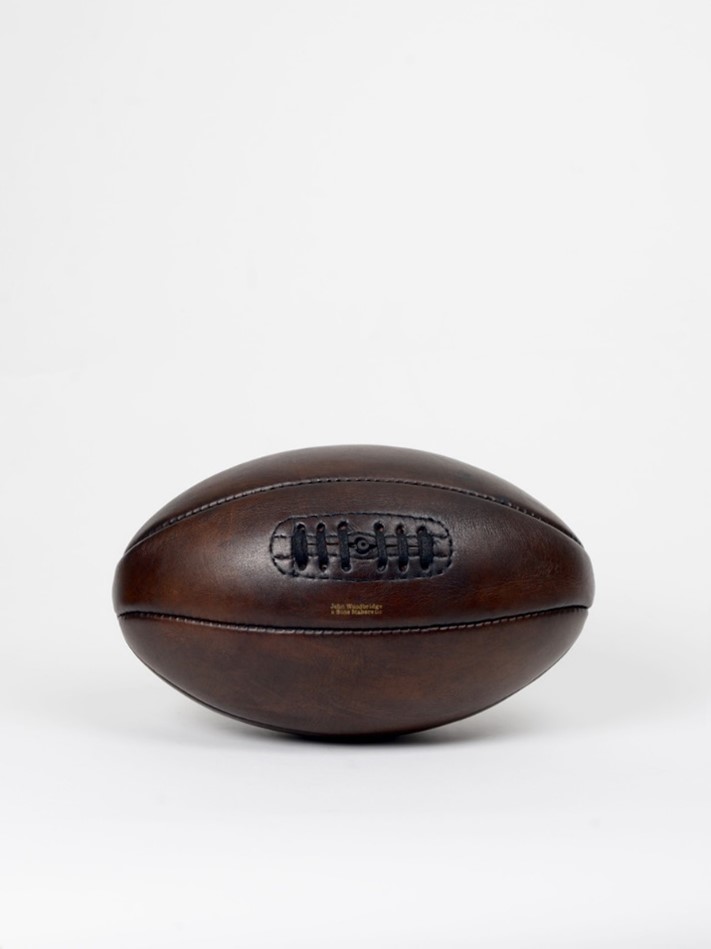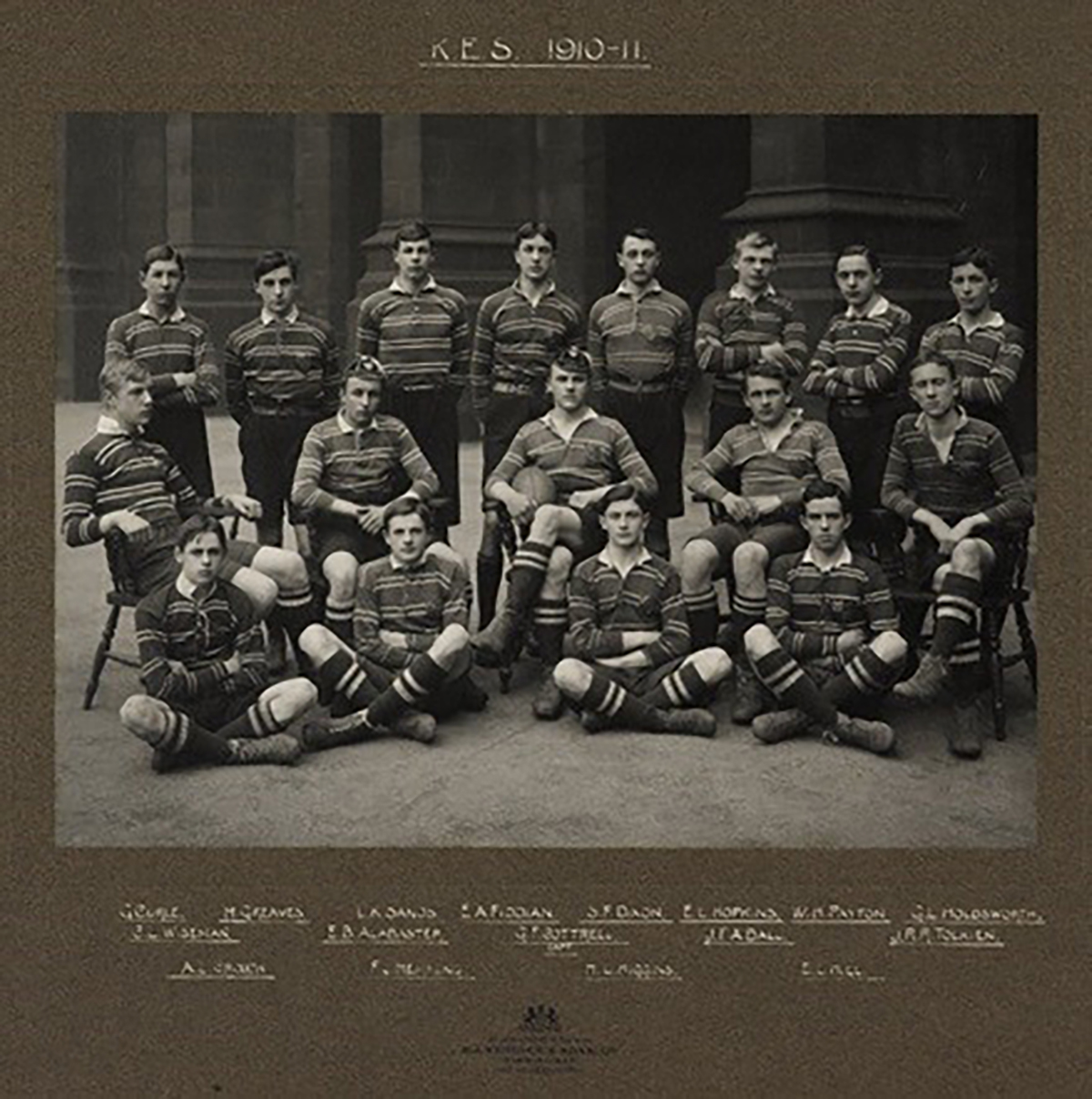Table des matières
Rugby
Notice n°8
sur l'idée commune d'un ancien flanqueur, Silmo, et documentée, argumentée par deux bons piliers Isengar et Cédric.
Rugby is a game for barbarians played by gentlemen. Football is a game for gentlemen played by barbarians.
Oscar Wilde.
Petite "plaisanterie" avec la création d'un ticket factice de match de rugby qui pu avoir lieu à
King Edward's school en 1910, alors que JRR Tolkien y était scolarisé. Par Cédric Fockeu.
Le passage de J.R.R. Tolkien à la King Edward’s school est l’un des moments clés pour le développement de son intérêt pour les langues (et notamment de l’anglo-saxon grâce à son professeur George Brewerton[1]) mais il s’y fit également remarquer par ses talents au rugby.
C’est que Tolkien était un fervent adepte de ce sport (contrairement au criquet qu’il trouvait particulièrement ennuyeux[2]) et l’a pratiqué avec un certain talent lors de ses jeunes années étudiantes.
Un ballon de rugby datant de 1920 [3]
D’ailleurs, même si de son propre aveu il était plutôt chétif et donc finalement pas vraiment prédestiné à jouer à un sport demandant une condition et une constitution physique « adaptée », il compensa cette relative faiblesse par un surcroît de motivation et de « férocité ». Ses prestations sur le terrain s’en ressentirent à tel point qu’il devint capitaine de l’équipe[4]. Hors du terrain mais toujours impliqué, il fut secrétaire du club de rugby[5]!
À sa grande surprise, sa réputation de rugbyman traversa les années comme Tolkien put s’en rendre compte lors d’une visite à Birmingham en 1944 où bon nombre d’élèves le connaissait, dit-il, pour « mes prouesses au rugby et mon goût pour les chaussettes de couleur »[6].
Photo de l’équipe de rugby de la King Edward’s school (année scolaire 1910-1911) en 1910.
J.R.R. Tolkien est assis, second rang, à droite.
© World Rugby Museum.
Comme bon nombre de joueurs de ce sport de gentleman, Tolkien n’a pas été exempté de blessures durant sa « carrière ». Comme il l’évoqua avec son fils Michael, il eut outre les contusions habituelles « la langue presque tranchée »[7] au cours d’un match. D’après lui, c’est cette blessure qui était responsable de sa tendance à mâcher ses mots voire à bredouiller parfois. Il faut cependant considérer cette confession comme une forme d’humour de Tolkien (on le sait, il bredouillait bien avant cela) ou une façon gentille de se moquer de la part de son biographe, Humphrey Carpenter[8]. Autre séquelle, des douleurs qui se firent ressentir bien longtemps après les faits (Tolkien mentionne ce problème à son fils Michael en 1936[9]) ayant pour origine un nez cassé au rugby, et mal soigné.
À part l’aspect sportif et physique du rugby, Tolkien a aussi trouvé une certaine inspiration littéraire à King Edward’s school. En 1911, il publie l’un de ses tous premiers poèmes dans le The King Edward's School Chronicle intutilé « The Battle of the Eastern Field »[10]. Ce poème décrit en termes épiques (et parodiques) un match de rugby qui s’inspire des célèbres « Lays of Ancient Rome » de Lord Macauly.
Les deux équipes en présence sont représentées par Tolkien comme des clans romains vêtus de rouge et de vert, prêtes à en découdre. Extrait :
Oh, crécelles appelez au combat !
Oh, trompettes vagissez bruyamment !
Jusqu’au sang, les clans vont rivaliser
En ce jour dans le champ,
En ce jour les murs et les tableaux noirs
Sont couverts d’écriture déliée[11]
Tout un programme !
Terminons par une légende qui nous fait sourire à défaut de pouvoir dire qu’elle a une quelconque réalité. Le terme « orc » serait en effet tiré de l’acronyme ORC du Oxford Rugby Club où les hurlements gutturaux de certains joueurs auraient inspiré à Tolkien le nom de cette engeance[12]…



